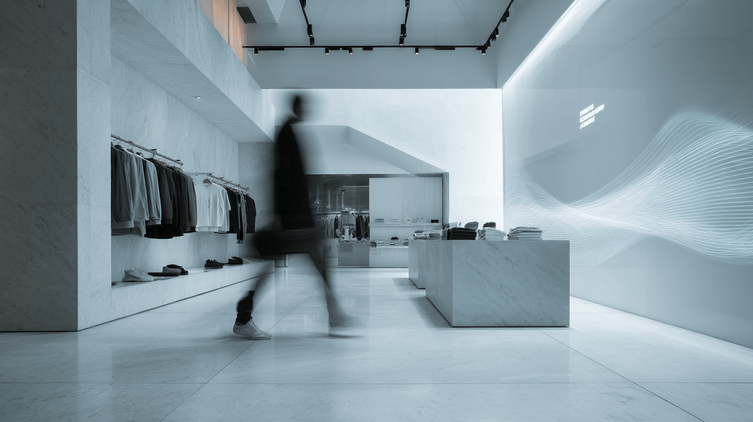After years of digital overload, virtual conference calls, and meet-up restrictions, people are hungry for presence and seek this out in their travel experiences. Today’s traveler craves immersion and connection in their traveling agenda. Sound plays a central, yet often overlooked, role in that journey. It transforms the travel experience.
Written by Val Fleur
This article is a guided tour of how sonic branding travels- how it works, why it matters, and what happens when we finally tune in and listen.
How Sound Works: Memory In Motion
As we go about our day, a single familiar sound can trigger a wonderful feeling of nostalgia. It instantly transports us back to that original moment of discovery, fascination, and wonder. When it comes to a destination we once visited or wanted to visit, that feeling of excitement is that much stronger.
The sound of a ukulele reminds us of Hawaii, chirping cicadas take us back to Provence, tuk-tuk horns return us to the streets of Bangkok, and the Asian Koel’s (also locally known as the ‘uwu bird’) call brings us straight to Singapore. These auditory memories anchor travel experiences, both past and present, between reality and emotion. They can also contribute to the further purchase decision.
“Sounds are souvenirs too. Recalling fond travel memories through sound is one of the most powerful forms of marketing. They prompt recall.”
In an industry striving to bring people back into the fold, harnessing fond memories of past travel experiences is one of the strongest and most effective forms of marketing available. Here are just a few organizations that understand the importance of collecting and harnessing these sounds.
Cities and Memories has been working on a project collecting sounds of 130 different countries and territories, “remixing the world, one sound at a time”. The listener can explore the sounds of faraway places from the comfort of their own home.
Hawaiian Airlines understands the power of sound. Embarking on a flight to Hawaii, we are transported to the islands at 30,000 feet. Island music and soundscapes play from the cabin, preparing us for the plane’s arrival in a few short hours. In some ways, we’ve started our holiday early.
Cathay Pacific understands this, too. The airline partnered with Sixième Son to create Song of Cathay, a sonic identity that elevates the journey from boarding to arrival and more. Inspired by Hong Kong’s contrasts and shaped by a waltz-like rhythm (a nod to the brand platform ‘Move Beyond’), the music evokes movement, fond memories, and Asian hospitality. Whether in-flight or in lounges, passengers are guided by sound that whispers premiumness and promises adventure.
Why Sound Matters: A Strategic Tool Of Design
Designed as a branded asset, sound can shape the travel experience accordingly. Sound becomes part of the pre-travel seduction, a pivotal piece of arrival, and a solid foundation for treasured memories for years to come.
“Sound isn’t just ‘there’- it is designed. Sounds’ intentional use shapes the entire travel experience.”
As a logo shapes a brand’s visual identity, sound solidifies the emotional aspect. Using both thoughtfully creates a long-lasting, life-changing experience that will be talked about, shared, and revisited.
The Venice Simplon-Orient-Express (VSOE) is a perfect example of how sound shapes experience in a strategically designed way. As no piece of furniture or decor is overlooked on the train, neither is the music. The VSOE’s sonic soundscape was designed specifically for the traveler to feel a certain way; a once-in-a-lifetime lap of luxury moment carefully curated and artistically refined.
Sound can also serve as a narrator or guide. Destinations-off-road.com offers guided tours off the grid so you can explore destinations (NYC, Miami, Las Vegas, Chicago) in a more customized and intimate way. They recently added audio capsules to their experience. Now, you just have to locate yourself in the city and press play to be immersed in a unique audio discovery experience.
Tuning In: From Silence to Soundscape
“Sonic branding can be both a stimulator of experience and a sanctuary.”
Sometimes the uniqueness of quiet can be the ultimate draw. While complete silence can feel off-putting, turning down the dial to hone in on the present moment can be rich and rejuvenating. When sound is designed to be minimalistic, it allows the senses to focus on what remains: birds chirping, the crashing of waves, or even one’s breathing.
“Designing soundscapes of silence can be re-invigorating and stunning; two words that invite reflexion long after the listener has returned to daily life.”
Unplugged focuses on silence. With off-grid cabins only hours from civilization, they offer a rare chance to unplug, listen to nature, and regain that sense of peace and tranquility that only comes from communing fully with nature.
Havila Voyages is using silence and lowered decibel levels as a selling point for their serene cruise locations along the Norwegian coast. These experiences are rooted in turning down the noise and increasing the volume on the awe-inspiring land and seascapes.
What Happens When We Listen
As travelers, we don’t just want to see a place—we want to feel it. We’re seeking a deeper emotional connection, cultural authenticity, and moments that last longer than a photograph. Sound is the key to this grounding, evocative, and immediate immersion. Travel brands that utilize sound unlock a powerful portal to an unforgettable and deeply impactful experience. SNCF is not just the sound of the French rail company—it’s the sound of France.
“Sound is a design tool, an identity cue, and a memory-maker.”
Sound travels beyond our vacation. It takes the experience home with us, creating a lasting memory in our minds that is treasured and loved. That feeling returns with every strum of a ukulele or each buzz of a 17-year-old bug.
For travel brands wanting to unlock deeper connections, it’s time to turn up the volume and design with the ears in mind.









